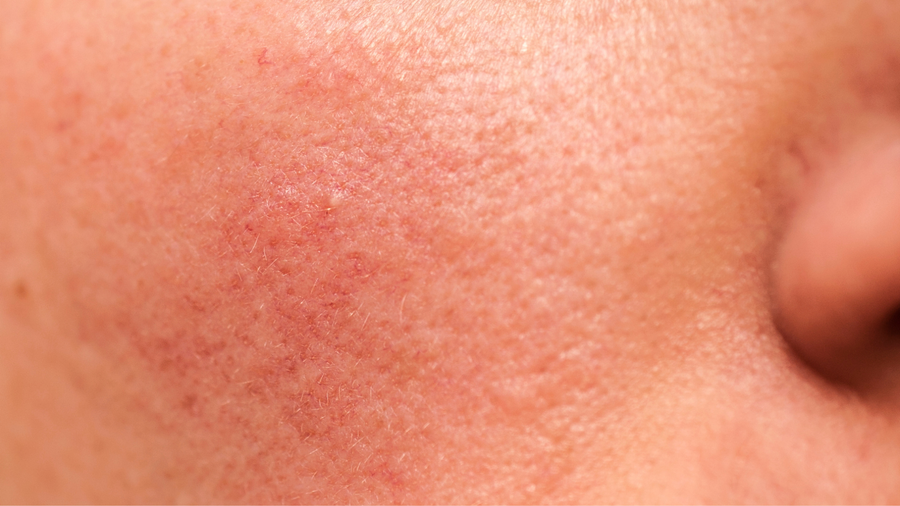If you’ve ever found yourself standing in the skincare aisle wondering which cleanser, serum, or moisturizer is actually right for your skin, you're not alone. One of the most common (and overlooked) steps in building an effective routine is understanding your skin type. If you’re not sure how to tell what skin type you have, this guide is for you.
Whether your skin feels dry one week and oily the next or you’re dealing with irritation that seems to come out of nowhere, getting clear on your baseline skin type can help you make smarter, simpler product decisions, especially if you have sensitive or reactive skin.
Why Knowing Your Skin Type Matters
Think of your skin type as your starting point. It determines what ingredients your skin will love, what textures feel best, and how many steps you actually need in your routine (it’s likely fewer than you think!).
Understanding your skin type can help you:
- Avoid unnecessary irritation from products that aren’t a match
- Simplify your routine (hello, less clutter and decision fatigue)
- Choose skincare that actually supports your barrier
-
Track changes over time, especially during seasonal shifts or hormonal transitions
At GRAES, we’re all about helping you build minimalist routines that actually work, and that starts with knowing what your skin needs (and what it doesn’t).
What Are the 5 Skin Types?
Most dermatologists group skin into five main categories. You may fall into more than one at different times, but here’s a breakdown to help you figure out where you currently land:
1. Normal Skin
- Balanced oil and moisture levels
- Even texture and tone
- Few breakouts or sensitivity
-
Can tolerate most products with ease
2. Dry Skin
- Lacks moisture and lipids
- Feels tight, rough, or flaky
- May appear dull or textured
-
Can sting or burn when using active ingredients
3. Oily Skin
- Overproduction of sebum (oil)
- Shiny appearance, especially in T-zone
- Larger-looking pores
-
More prone to breakouts and blackheads
4. Combination Skin
- Oily in some areas (usually T-zone), dry in others (cheeks, jawline)
- Requires more balanced routines
-
Pores may be visible in oily areas, tightness in dry zones
5. Sensitive Skin
- Easily irritated by products, weather, or stress
- May experience redness, burning, itching, or flaking
- Often reacts poorly to fragrance, essential oils, or harsh actives
- Barrier repair and minimalism are key
How to Determine Your Skin Type at Home
You don’t need a facialist or fancy device to figure out your skin type. You just need clean skin, a mirror, and a little patience.
The Bare-Faced Test
- Wash your face with a gentle cleanser
- Pat dry with a clean towel
-
Don’t apply any products, just let your skin breathe for one hour
-
After an hour, observe if your skin:
-
Feels tight or rough? Likely dry skin
-
Looks shiny all over? Probably oily skin
-
Has a shiny T-zone, but dry cheeks? Combination skin
-
Feels balanced with no major issues? Normal skin
-
Is red, itchy, or flushed? You may have sensitive skin
-
Optional: press a clean tissue to different zones of your face to see if/where oil appears.
How Your Skin Type Affects Your Routine
Once you know your skin type, you can start building a routine that supports it, without extra steps or ingredients that might throw it off balance.
Dry Skin
- Needs rich, hydrating formulas with occlusive ingredients like ceramides, squalane, and oat extract
-
Avoid harsh exfoliants and stripping cleansers
Oily Skin
- Benefits from lightweight hydrators and oil-regulating ingredients like niacinamide or zinc
-
Avoid heavy creams and comedogenic oils
Combination Skin
- Use gentle, balancing products that don’t dry out or overhydrate
-
Apply richer creams to dry areas and gel-based hydrators to oily zones
Sensitive Skin
- Stick to minimalist formulas with no fragrance, alcohol, or essential oils
-
Prioritize barrier support over harsh actives
Normal Skin
-
Lucky you! Just focus on maintenance and gentle ingredients to keep balance in check
At GRAES, we designed Night C.A.P. to work across multiple skin types, especially sensitive and reactive skin. It contains skin-soothing ingredients like colloidal oatmeal, allantoin, and niacinamide, with no harsh additives, fragrance, or drying alcohols.
Can Your Skin Type Change?
Yes! Your skin type isn’t fixed forever, it can change with:
- Seasonal weather shifts
- Hormonal changes (puberty, cycle changes, pregnancy, menopause)
- Stress or sleep deprivation
- Diet, medications, or travel
-
Overuse of active ingredients or product layering
That’s why it’s worth checking in every few months, especially if your go-to products suddenly stop working like they used to.
When to See a Dermatologist
Sometimes, it’s not just your skin type, it’s a skin condition. If you experience any of the following, it might be time to get professional support:
- Chronic flaking, rashes, or painful breakouts
- Sudden skin changes that don’t resolve with gentle products
- Signs of eczema, rosacea, or hormonal acne
- Skin that reacts to almost everything
A derm or functional medicine practitioner can help rule out deeper issues and even suggest patch testing to identify triggers.
TL;DR
Understanding your skin type is the first step to a routine that actually works.
- Use the bare-faced test to figure out your skin type at home
- Tailor your routine to support—not fight—your skin’s natural tendencies
- Reassess seasonally or if your skin changes
- Choose products designed to be gentle, effective, and barrier-safe
Ready to Build a Routine That Matches Your Skin?
Try Night C.A.P.—our 8-in-1 night cream made for even the most sensitive skin. Thoughtfully formulated without irritants, so you can skip the guesswork and get real results with just one step.








